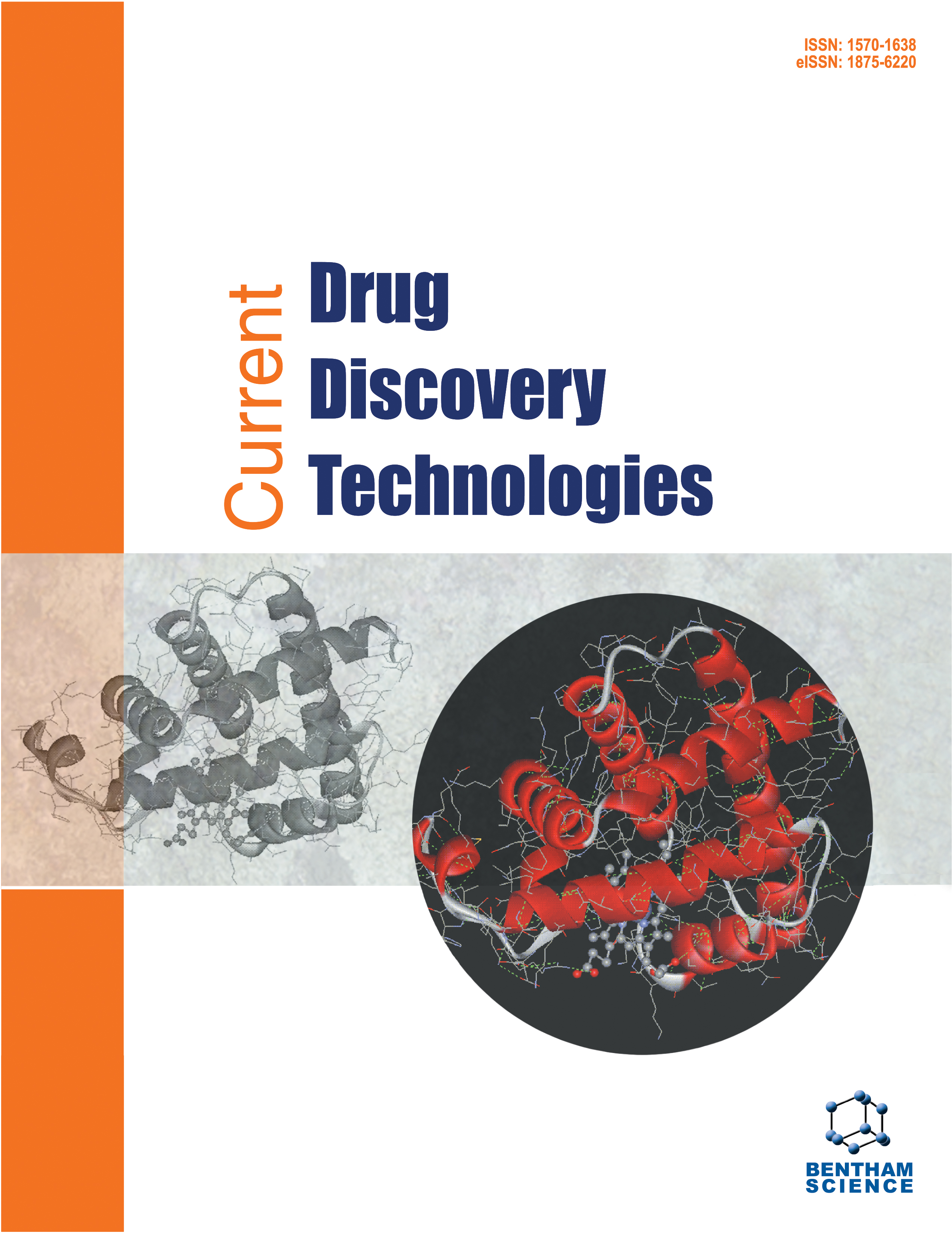- Home
- A-Z Publications
- Current Drug Discovery Technologies
- Previous Issues
- Volume 3, Issue 1, 2006
Current Drug Discovery Technologies - Volume 3, Issue 1, 2006
Volume 3, Issue 1, 2006
-
-
Development and Validation of an In Silico P450 Profiler Based on Pharmacophore Models
More LessAuthors: Daniela Schuster, Christian Laggner, Theodora M. Steindl and Thierry LangerIn today's drug discovery process, the very early consideration of ADME properties is aimed at a reduction of drug candidate drop out rate in later development stages. Apart from in vitro testing, in silico methods are evaluated as complementary screening tools for compounds with unfavorable ADME attributes. Especially members of the cytochrome P450 (P450) enzyme superfamily - e.g. P450 1A2, P450 2C9, P450 2C19, P450 Read More
-
-
-
Rational Design Approaches to Chemical Libraries for Hit Identification
More LessSequencing of the human genome along with developments in combinatorial synthesis and high-throughput biological screening provide unparallel opportunities to drug discovery. It has been noted that the increased number of synthesized and annotated compounds did not yield the expected increase in number of viable drug candidates. To address this problem, several novel computation technologies have emerged for maki Read More
-
-
-
Anti-Inflammatory and Anti-Oxidant Activity of a New Class of Phenyl- Pyrazolone Derivatives
More LessAuthors: C. Cusan, G. Altinier, S. Sosa, F. Sibilla, F. Bucar, A. Tubaro, M. Prato, G. Spalluto and T. D. RosThe anti-inflammatory activity of a new class of phenyl-pyrazolone derivatives, structurally related to phenidone, has been evaluated using the Croton oil ear test in mice as model of acute inflammation. Derivative 5h reduces the percentage of oedema similarly to indomethacin and more efficiently than phenylbutazone. The anti-inflammatory activity of these two reference drugs depends on their COX inhibition, but for the Read More
-
-
-
Fine-Grained Statistical Torsion Angle Potentials are Effective in Discriminating Native Protein Structures
More LessAuthors: Alessandro Albiero and Silvio C.E. TosattoModelling of drug targets requires the reliable selection of an accurate and representative structure from large ensembles of alternate models. Statistical potentials developed to discriminate native protein structures generally represent pairwise interactions between atoms, which are less sensitive to local conformational details. The discrimination of local distortions is therefore particularly difficult. Local interaction prefere Read More
-
-
-
Advanced Glycation End Products (AGEs) and their Receptor (RAGE) System in Diabetic Retinopathy
More LessAuthors: Sho-ichi Yamagishi, Kazuo Nakamura and Takanori MatsuiVascular complications are a leading cause of blindness, end-stage renal failure, a variety of neuropathies and accelerated atherosclerosis, which could account for disabilities and high mortality rates in patients with diabetes. There is a growing body of evidence that formation and accumulation of advanced glycation end products (AGEs) progress during normal aging, and at an extremely accelerated rate in diabete Read More
-
-
-
oa Erratum
More LessJ. M. Rollinger*, P. Mock, C. Zidorn, E. P. Ellmerer, T. Langer and H. Stuppner: Application of the in combo screening approach for the discovery of non-alkaloid acetylcholinesterase inhibitors from Cichorium intybus Current Drug Discovery Technologies, 2005, 2, 185-193 Page 187: Some of the structures in Fig. 1 were incorrect or missing due to oversight of the authors. Thus, the figure should be replaced by the one depicted be Read More
-
Volumes & issues
-
Volume 22 (2025)
-
Volume 21 (2024)
-
Volume 20 (2023)
-
Volume 19 (2022)
-
Volume 18 (2021)
-
Volume 17 (2020)
-
Volume 16 (2019)
-
Volume 15 (2018)
-
Volume 14 (2017)
-
Volume 13 (2016)
-
Volume 12 (2015)
-
Volume 11 (2014)
-
Volume 10 (2013)
-
Volume 9 (2012)
-
Volume 8 (2011)
-
Volume 7 (2010)
-
Volume 6 (2009)
-
Volume 5 (2008)
-
Volume 4 (2007)
-
Volume 3 (2006)
-
Volume 2 (2005)
-
Volume 1 (2004)
Most Read This Month
Article
content/journals/cddt
Journal
10
5
false
en


